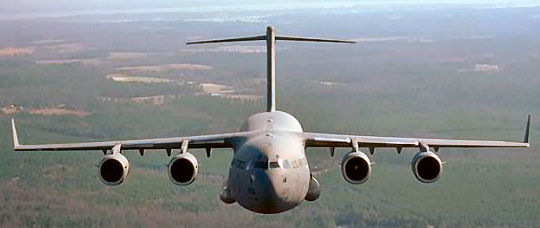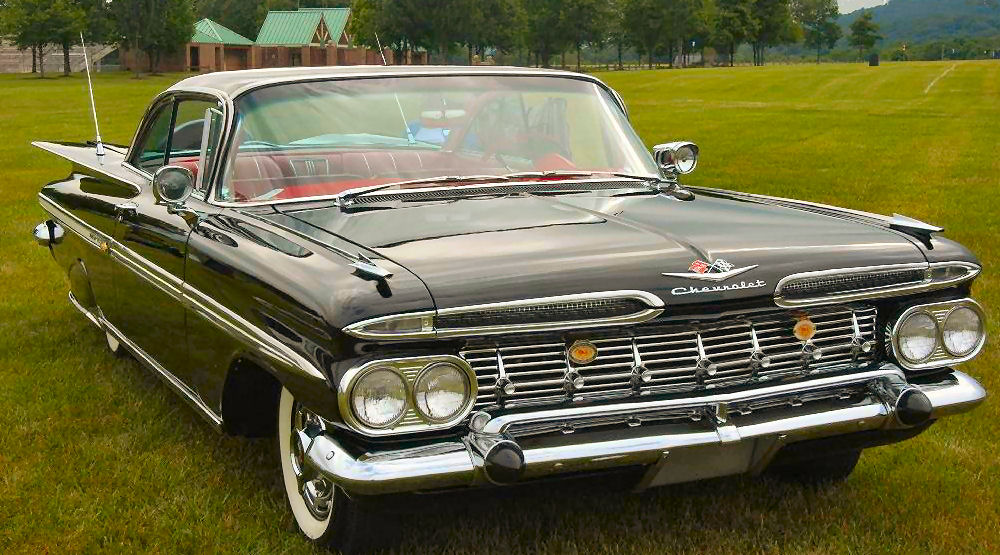|
Radschool Association Magazine - Vol 35 Page 16 |
|
Privacy Policy | Editorial Policy | Join the Association | List of Members | Contact us | Index | Links | Print this page |
|
|
|
Lemon cars. Choice
We’ve all had one – a car that was just a dud – a lemon!! Some
cars will go on forever without ever seeing a spanner, while others
(and it’s only a small number) of the same model and make will be
complete disasters, forever letting you down. Up until now, all you
could do was
Well, at long last, the Australian and State Governments have consulted and in 1 January, 2011, brought in Lemon Laws which will mean that if you do get a dud you can now take it back to the seller and claim a replacement or a refund. Prior to this, the way the law stood, if you got a dud you had Buckley’s chance of getting a replacement or your money back, all the law required was for the seller to repair the car under warranty.
And there was no hope of being compensated for the inconvenience, aggravation, lost income and costs racked up while constantly taking the car back to the dealer either. Some new car buyers have tried but only a few very determined ones have succeeded, usually after long, expensive battles against squads of car company lawyers in various courts.
The new Australian Consumer Law (ACL), developed by the states and the Australian Competition and Consumer Commission, came into force on January 1 this year. It's not as tough as the US lemon laws, but it gives you much more protection than the maze of state and federal consumer regulations you previously had to navigate to make a case that your car resembled a particularly bitter variety of citrus fruit.
The Australian Consumer Law applies to most goods and services, including new and used cars, except those bought at auction or private sale, where you're still basically on your own. When you buy a car from a dealer, you now have the protection of legally enforceable consumer guarantees, including that the car is of acceptable quality (which includes being safe, free from defects and durable) and reasonably fit for any purpose you specify when buying it, such as towing.
If you have what the ACL calls a major failure with your car, you are entitled to return it to the dealer to claim a refund, or a replacement -- your choice of an identical new car or one of similar value. The definition of “A major failure” is when a reasonable consumer would not have bought the car if they had known about the problem, or when the car is substantially unfit for its normal purpose.
In other words -- the car is a lemon.
If you have a minor problem with the car, the dealer is still allowed to fix it under warranty and if you bought the car in (say) Brisbane and while on holidays in Melbourne you have to get the car fixed, you're entitled to claim any costs from the dealer who sold you the car.
However, where the new law has teeth is:- if the dealer can't fix the problem within a reasonable time, you are now entitled to a refund or a replacement. So, at last, the classic tactic of some dealers and manufacturers stringing you along by continually saying, “Just bring it back and we'll try to fix it under warranty'' (until the warranty runs out), will no longer work. And when the warranty expires you are still protected by the ACL's consumer guarantees. While the law is pretty straight forward when dealing with new cars, when being applied to used cars the car's age and kilometres driven since you bought it will be taken into account when determining your entitlements.
The ACL also addresses one of the other great traps of the car business -- the extended warranty. Many new and used car buyers have paid thousands of dollars for one of these, on the (mis)understanding that, first, it's the only way to cover themselves against repair costs when the factory warranty runs out and, second, that when they make a claim under the warranty, it will be honoured. Those same car buyers have often found, to their great cost, that these extended warranties sometimes are not worth the paper they are written on.
They are, first and foremost, a way to increase a dealer's profit margin on the car. Most have very onerous conditions, including mandatory servicing schedules at the dealer who sold you the car. In the worst cases, consumers have called the helpline number on the warranty policy only to find there's nothing other than an answering machine on the other end of the line. The ACL states that manufacturers and dealers must not pressure you into buying an extended warranty, or tell you that you have to buy one.
In fact, you now have rights under the ACL's guarantees that are equal to or greater than any supposed benefits you're paying for under an extended warranty policy.
If you think you've bought a lemon, the first step is to tell the dealer.
You should go to the dealer who sold you the car and point out to them that they are legally obliged to provide you with a car that does what it is supposed to do under the ACL consumer guarantees. Dealers can no longer pass the buck by telling you to take your car's problems up with the manufacturer. The dealer is responsible, under the ACL, for providing you with a replacement or a refund. The dealer can then sort out reimbursement from the manufacturer. That's his problem, not yours.
The ACL also imposes similar customer guarantee obligations on manufacturers and importers, including car companies. A manufacturer must now guarantee, to you, the consumer, that the new car you have bought is of acceptable quality and matches the description on which you based your decision to buy it. A manufacturer must also guarantee the availability of repairs and spare parts for a reasonable time after you have bought the car.
If the manufacturer fails to meet one of these consumer guarantees, you also have rights against them. You are entitled to ask for an amount covering the drop in value of the car as a consequence of the manufacturer's failure to meet any consumer guarantee. You are also entitled to claim compensation for costs such as lost time, income or productivity caused by the problems with your car.
If a dealer wants to argue about whether your car is a lemon, tells you to keep bringing it back for warranty repairs or simply refuses to acknowledge your rights under the Australian Consumer Law, you should notify the ACCC, the federal regulator responsible for ensuring that dealers and manufacturers comply with the law, and contact the consumer tribunal in your state or territory, which will advise you on how to get some long overdue lemon-aid.
|
|
A group of chess enthusiasts checked into a hotel and were standing in the lobby discussing their recent tournament victories. After about an hour, the manager came out of the office and asked them to disperse. "But why?" they asked, as they moved off. "Because," he said, "I can't stand chess nuts boasting in an open foyer."
|
|
Compressed air car.
The huge Indian Tata Motors is ready (we think) to introduce an Air Car that uses compressed air, as opposed to the petrol/diesel-and-oxygen explosions of internal-combustion engines to drive its engine's pistons. This will be the world's first air-powered car with zero emissions. Now that will really make Mr Caltex, Shell and others sit up and take notice. The concept was developed by ex-Formula One engineer Guy Nègre for the Luxembourg-based company MDI and taken up by Tata.
Compressed air cars are powered by motors fueled with air which is stored in a tank at high pressure (4500 psi). Rather than driving engine pistons with an ignited fuel-air mixture, compressed air cars use the expansion of compressed air, in a similar manner to the expansion of steam in a steam engine.
The Storage tanks will probably be made of carbon-fibre for weight reduction while maintaining strength as if and when penetrated, carbon fibre will crack but not produce shrapnel. This is not a new concept as there have been prototype ‘air’ cars since the 1920s and compressed air has been used in torpedo propulsion as well but with the new injectors and electronics that are available today, it looks like they could soon become the norm.
|
|
|
|
|
|
It works like this:
Outside air is drawn into the compression chamber of the engine and
compressed to about 300 psi. At the highest point of pressure (at
‘top dead centre’), this air reaches 400°C (centigrade), and, at
that point, a small amount of air from the storage tank is injected
into the combustion chamber.
Since the injected air is much colder than the outside air compressed in the cylinder (Charles's law), the injected air is heated instantaneously, causing a sudden expansion/explosion, which pushes the piston down. The air tanks fitted to the underside of the vehicle hold about 300 litres of compressed air and this will power the Air Car for up to to 300km.
The cars are fitted with their own compressors which can be plugged into a normal household power point. It will take about 4 hours for the vehicle to refill its own compressed air tanks but if and when the cars become plentiful, “re-airing” centres, like the current service stations, will be established and they can ‘refill’ the car in about 3 minutes (like they do with gas today) – at a cost of about $2.00.
The temperature of the clean air expelled by the exhaust pipe is between 0-15 degrees below zero, which makes it suitable for use by the internal air conditioning system with no need for gases or loss of power.
Bring it on!!!!
|
|
A woman has twins and gives them up for adoption. One of them goes to a family in Egypt and is named "Ahmal." The other goes to a family in Spain; they name him "Juan." Years later, Juan sends a picture of himself to his birth mother. Upon receiving the picture, she tells her husband that she wishes she also had a picture of Ahmal. Her husband responds, "They're twins! If you've seen Juan, you've seen Ahmal."
|
|
New Engine - 100 MPG??
The Germans have developed a new engine. It's a two cylinder with
four pistons and it delivers 300+ Horse Power. It is extremely small
and very efficient and is presently in use in test applications It
is called OPOC (Opposed Piston Opposed Cylinder) and it’s a
turbocharged two-stroke, two-cylinder, with four pistons, two in
each cylinder, that will run on petrol, diesel or
The concept was developed by Prof. Peter Hofbauer. During his 20 years at VW, Hofbauer headed up, among other things, development of VW’s first diesel engine and the VR6. The OPOC has been in development for several years and the company claims it’s 30 percent lighter, one quarter the size and achieves 50 percent better fuel economy than a conventional turbo diesel engine.
They’re predicting 100 MPG in a conventional car!
You can see a video of the engine working HERE.
Switchblade - Miniature Loitering Weapon
During the mid 2000’s the US based Defence Advanced Research Projects Agency (DARPA), later followed by the U.S. Air Force research Lab, promoted research and development of technologies related to the use of miniaturized, loitering aerial weapon systems. One of the programs evolving from these studies was Project Anubis. The objective of the project was the development of a prototype for a Non Line of Sight (NLOS) weapon system to engage time-sensitive, fleeting, high value targets. The Anubis weapon was an armed, tactical miniature aerial system (MAV), equipped with an imaging sensor capable of target identification, tracking and terminal guidance. The MAV is also equipped with a small warhead for lethal attack.
The system employs innovative seeker/tracking sensor algorithms that enable engagement of stationary or manoeuvring targets ensuring high kill probability. The small warhead utilized with the system results in 'very low collateral damage'. In fact, Anubis will be able to perform what special operations snipers are doing today - but offer operators more opportunities to strike, perform more complex missions at longer range and ensure maximum safety for the shooter.
In January 2010 small UAV specialist Aerovironment was awarded the final increment of $1.18 million for the third phase of development. According to the Air Force, Anubis will be able to track-down high-value manoeuvring targets flying in 'non-line-of-sight' conditions (hinting at urban warfare). Aerovironment is not relating officially to the Anubis program, but has unveiled a similar weapon system called Switchblade. If Anubis is in fact the Switchblade Aerovironment is already offering, it will also have a potential to become an aerial munition offering new capabilities for small UAVs so far unable to carry out such missions. In December 2010 the company was selected as one of three finalists for the Air Force's LMAMS program, aiming to field miniature-lethal drone capability with Special Operations units by 2012.
AeroVironment describes the Switchblade as the war-fighter's “magic bullet”. It can rapidly provide a powerful, but expendable miniature flying Intelligence, Surveillance and Reconnaissance (ISR) package on a Beyond Line-of-Sight (BLOS) target within minutes. This miniature, remotely-piloted or autonomous platform can either glide or propel itself via quiet electric propulsion, providing real-time GPS coordinates and video for information gathering, targeting, or feature/object recognition. The vehicle’s small size and quiet motor make it difficult to detect, recognize, and track even at very close range. The Switchblade is fully scalable and can be launched from a variety of air and ground platforms. It is controlled via a common ground launcher, also used for controlling the RQ-11B Raven, Wasp or Puma.
The Switchblade's payload and launcher, weighing less than six pounds total, can be carried in a backpack by a single soldier. The mini UAV, which sends streaming video and GPS coordinates back to its operator, can be transformed from an intelligence, surveillance and reconnaissance UAV into a mini bomb striking a target beyond the line of sight.
The battery-powered vehicle has a very low visual, acoustic and thermal signature. AeroVironment says the weapon can also be deployed from submarines, ground vehicles and a manned, as well as unmanned, aircraft. It is designed to operate at low level - below 500 ft above ground, and at a maximum altitude 15,000 ft. Officially, Switchblade has an endurance of 'greater than five minutes', but the system is scalable to meet changing user requirements.
The company already produces the Wasp III micro-UAV for the U.S. Special forces and Marine Corps and in 2008 has been awarded a development project for the "Stealthy, Persistent, Perch and Stare (SP2S) UAS", based on a modified WASP design.
You can see a video of it in action HERE
|
|
Murphy, a furniture dealer from Dublin, decided to expand the line of furniture in his store, so he decided to go to Paris to see what he could find. After arriving in Paris, he visited with some manufacturers and selected a line that he thought would sell well back home. To celebrate the new acquisition, he decided to visit a small bistro and have a glass of wine. As he sat enjoying his wine, he noticed that the small place was quite crowded, and that the other chair at his table was the only vacant seat in the house. Before long, a very beautiful young Parisian girl came to his table; asked him something in French (which Murphy couldn't understand); so he motioned to the vacant chair and invited her to sit down. He tried to speak to her in English, but she did not speak his language. After a couple of minutes of trying to communicate with her, he took a napkin and drew a picture of a wine glass and showed it to her. She nodded, so he ordered a glass of wine for her. After sitting together at the table for a while, he took another napkin, and drew a picture of a plate with food on it and she nodded. They left the bistro and found a quiet cafe that featured a small group playing romantic music. They ordered dinner..... after which he took another napkin and drew a picture of a couple dancing. She nodded, and they got up to dance. They danced until the cafe closed and the band was packing up. Back at their table, the young lady took a napkin and drew a picture of a four-poster bed.
To this day, Murphy has no idea how she figured out he was in the furniture business.
|
|
Kilroy was here!
Ken Morris contacted us a while back about his friend Al Needham who
is married to Kathy who before she was married was Kathy Kilroy.
Kathy is the daughter of Jim Kilroy, the bloke who
At the time we were interested in telling the story in the RAM but Ken’s friend Al thought he would be in trouble with his wife if we did – so we didn’t. Well, Ken has been in touch again and says that Kathy’s brother Jim has given an interview to Radio Boston and told them the story and he suggests that now as the story is out there it wouldn’t hurt if we ran it – so here is the story as told to us some time ago by Ken.
“You’ve probably seen it scrawled somewhere. The three words “Kilroy was here,’” complete with an odd, little man peeking over a wall. In his book, “The History of American Graffiti,” Cambridge artist and author Caleb Neelon says “This little icon was something that grew in the latter days of the second World War and became kind of like the U.S. Armed Forces’ tag, almost. It certainly wasn’t thought of that way, but it was something that was easy enough for everybody to remember. And for all these young men who were headed off to the war, it was sort of a reassuring sight, in a way, I think because it meant you weren’t on unknown ground. The Americans had been here before — Kilroy had been here before and Kilroy was on your team.”
At the time, it wasn’t really important who Kilroy was and Neelon says the icon managed to become popular myth. “Kilroy was at the top of Mt. Everest, Kilroy was on the Moon, Kilroy was everywhere,” Neelon said. “You can go look at the Bugs Bunny ‘Hare Devil Hare’ cartoon where he meets Marvin the Martian who’s going to blow up the Earth. You know, Bugs goes to the Moon, what does he see? He sees ‘Kilroy was here.’ ”
In 1948, the Transit Company of America held a contest to find the real Kilroy. As it turns out, he lived in Halifax, on the South Shore.
“James J. Kilroy was a man who had worked as a rate setter at the Bethlehem Steel Shipyard in the Fore River shipyard in Quincy. That was a location where a lot of the big ships that helped the U.S. and the allies win World War II, they came out of that shipyard. There were tens of thousands of men who worked there at the time. Kilroy was an inspector and to mark his work he would write that now-famous phrase on ship parts. He didn’t do the little man peeking over the wall, that was an after-market addition that someone along the way coupled with it.
James J. Kilroy died in 1963. While researching the graffiti book, Neelon tracked down Kilroy’s eldest son and namesake who said. “When I was a kid it was almost bewildering and it was embarrassing,” Kilroy recalled in his Marshfield kitchen. “It was like making fun of our name. I never had a positive feeling toward it and I’m not sure anyone in my family did. It was just was of those weird things that happened.”
Kilroy the younger is 78 years old now and remembers the transit company contest that recognized his dad and said he’ll never forget what the Kilroy family was given for winning: a trolley car. The transit company plunked it down in the family’s backyard. The whole thing is surreal for this James Kilroy, and he’s long wondered how “Kilroy was here” went viral, especially in a pre-Internet era. One of his theories involves the hundreds of other inspectors his dad worked with at the shipyard.
“There must have been ‘Smith was here’ and ‘Jones was here.’ But he had been a sign painter and he had this great, really strong penmanship,” Kilroy said of his father. “And my guess is that if this is, in fact, where it came from was (that) his graffiti, for lack of a better word, stood out.”
“And that’s pretty much the story,” he added with a laugh.
Or part of it, at least. But James Kilroy wanted to add one more ironic piece to the tale.
“My father was not in the service,” Kilroy said. “In fact, I don’t think he ever left the state of Massachusetts except for, occasionally, trips to Rhode Island and Rockingham, N.H., which were race tracks.” His dad was not exactly a world traveller. “That, I think, was the funniest part about the whole thing — this guy never left the state,” Kilroy mused. But, of course, his father’s accidental graffiti “tag” sure did.
My Living Will.
Last
night, my kids and I were sitting in the living room and I said to
them, 'I never want to live in
They got up, unplugged the computer and threw out my wine.
They are SO on my shit list...
Fatal C-17 Crash.
John McDougall The results of an investigation into a fatal C-17 Globemaster III aircraft crash at Joint Base Elmendorf-Richardson, Alaska were recently released. Gen. Gary North, Pacific Air Forces commander, directed an investigation into the incident which resulted in the deaths of the four crewmembers aboard, the destruction of the $184 million aircraft and damage to part of the Alaska Railroad. The accident investigation board found clear and convincing evidence the cause of the mishap was pilot error. The investigation revealed the pilot placed the aircraft outside established flight parameters and capabilities.
During the mishap sortie, the pilot aggressively flew the aircraft in a manner inconsistent with established flight procedures, resulting in a stall. The pilot failed to take required stall recovery actions. Furthermore, the board concluded the co-pilot and safety observer failed to recognize or address the developing dangerous situation. As a result, the C-17 stalled at an attitude and at a level from which recovery to controlled flight was impossible.
The mishap occurred as the C-17 practised for the Arctic Thunder Air Show scheduled for the weekend of July 31 at Joint Base Elmendorf- Richardson. You can get a copy of the report HERE and you can see video of the accident HERE.
The footage has been edited to cut off just prior to the aircraft's impact out of consideration and respect for the families of the deceased.
They’re not as good as they used to be….
How often do you hear that – a lot of people reckon the cars that used to be made back in the 60’s were a heap stronger than the ones made today. “Back then they were made of metal, whereas today it’s all plastic”.
|
|
|
|
|
|
Well – how true is that??
Recently they got a 1959 Chevvy (above) and a Chevvy Malibou which was made in 2009 and decided to bang them together head to head – just to see what would happen. There is no sound but the video is amazing - it will surprise you.
You can watch it HERE.
|
|
Back Go to page: 1 2 3 4 5 6 7 8 9 10 11 12 13 14 15 16 17 18 19 20 Forward
|
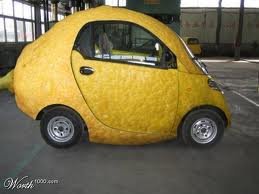 keep taking it back to the company that sold it to you and have them
try and fix it under warranty, which for some reason, never seemed
to work, and then when the warranty ran out, you were on your own.
keep taking it back to the company that sold it to you and have them
try and fix it under warranty, which for some reason, never seemed
to work, and then when the warranty ran out, you were on your own.
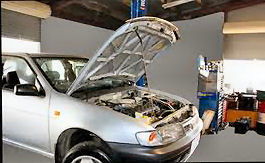
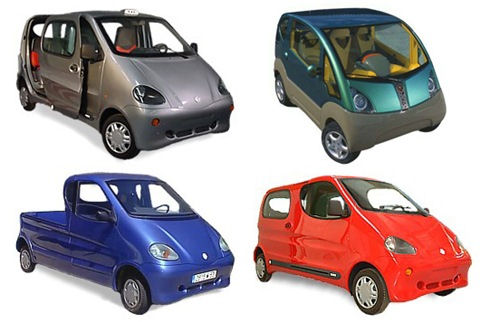
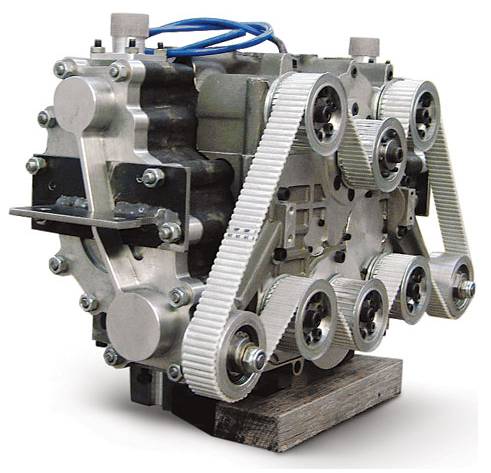
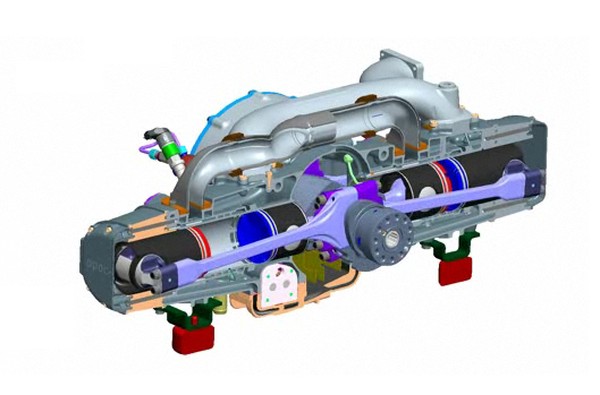 ethanol. The two pistons, inside a single cylinder, pump toward and
away from each other, thus allowing a cycle to be completed twice as
quickly as a conventional engine while balancing it's own loads.
ethanol. The two pistons, inside a single cylinder, pump toward and
away from each other, thus allowing a cycle to be completed twice as
quickly as a conventional engine while balancing it's own loads.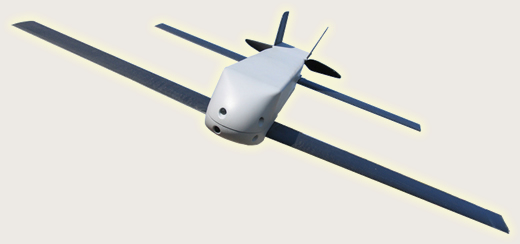

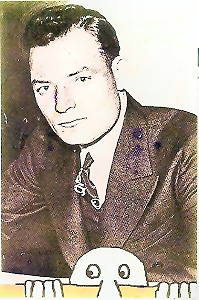
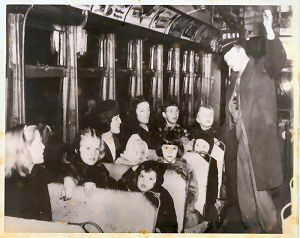
 a
vegetative state, dependent on some machine and fluids from a
bottle. If that ever happens, just pull the plug.'
a
vegetative state, dependent on some machine and fluids from a
bottle. If that ever happens, just pull the plug.'